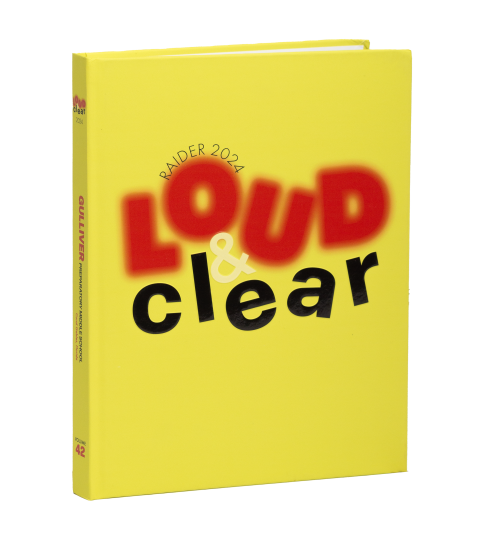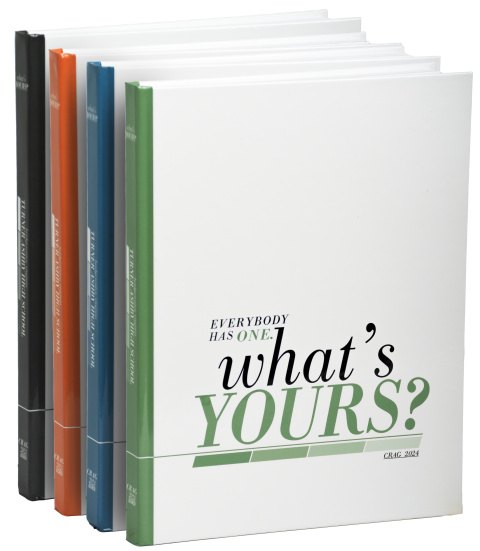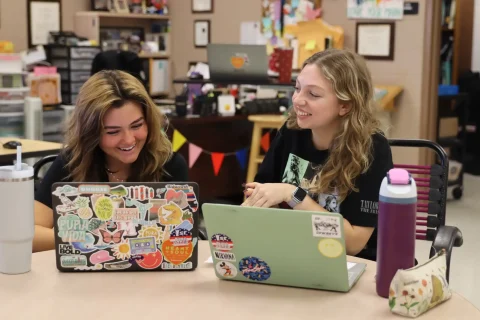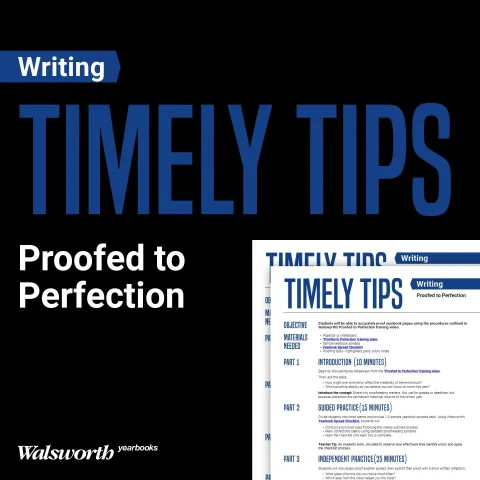Updated by Delaney Pierce 5/5/2025
Writing strong copy for the whole school year is no easy feat considering themes are typically developed in October. Some schools even work on their themes in the spring of the previous year! It’s a difficult task.
At times it may feel like you need a crystal ball to see how the year plays out to choose a theme that encapsulates your school year..
What is a theme?
The theme is the story the yearbook staff is going to tell about the year. It is a time capsule for those students’ lives and the school. When we’re deciding the theme, we are deciding it for ourselves and how we’re going to build our story around it. But how do you do that in May for May of the next year? It’s pretty hard to do.
It’s also worth acknowledging that none of the students or faculty outside of the yearbook will understand what theme is or complement the yearbook staff on it. What you will hear from other students, faculty and administrators? “Good book.” And that’s what you want to hear from them. That’s if you hear anything. Silence is usually a good sign.
The Beginning
Many staffs start with theme packets. Next year’s staff is divided into groups and asked to create their theme packets. They may come up with a possible cover, write theme copy and mock up a few pages. They may develop samples for every section of the yearbook, then present their results to the rest of the staff. For more details on how to develop a theme package, take a look at Jim Jordan’s Idea File article.
Choosing themes in the spring frequently results in staffs working hard to make it fit, then changing their theme late in the next school year.
Back It Up
It’s great when staffs see samples of something they love. For example, they may see another yearbook staff’s use of geometric shapes and decide they want to do it too. However, focusing on elements like this can quickly turn from design into decoration.
Slow down the process and back it up. Theme copy needs to come first.
Once you land on a theme phrase that you like, sit several students down in different areas of the room and have them take a stab at what they think the theme copy is going to sound like. Don’t have them work on the cover or any other component of the theme, focus only on the theme copy for the opening division spreads. This is just the first draft, but let them see if there’s a way that they can tell this story in their words.
How will you know it’s right for the year?
If that theme copy sounds like something that can inspire your staff and your students to do something well, then maybe the words, the theme phrase, are going to work for you. At this stage in the process, it’s just about putting words on paper to see if the theme phrase works. Get input from other people, including last year’s staff.
After you have some theme copy written – maybe a paragraph worth of copy – it’s time to think about how you’ll tell the story of the school year with that theme. Don’t concern yourself with fonts, graphics and colors yet; that would be putting the cart before the horse.
Gathering Intel
When discussing the theme, gather some facts about your community. Is your school on a hill? Do you only have one stoplight in the whole town? Try to avoid using minor changes, such as putting new turf on the football field, as the basis for a theme.
What trends are affecting students? Think about the environmental trends, technology trends, fashion trends and new slang and phrases that have big impacts on the school and school year.
You can’t assume everyone at the school is the same. Don’t focus on the school as a whole, but look at how the theme can encompass individual students with different feelings, ideas and experiences.
The phrase you come up with may not end up being your final theme, but it will help get everyone on the same page. Be open to exploring any and all possible phrases. Once you find the phrases that might work for the upcoming year, explore the different angles you can take with it.
Next, use the seven-minute theme exercise: designate one student as the writer, then have students flip through magazines for seven minutes and call out phrases they like. Don’t worry about whether those phrases will get used, just write them down. Look at headlines, caption starters, the table of contents and advertisements. The paper should be full at the end of the seven minutes.
Next, set that paper aside for a little bit. Come back to it later, maybe the next day, and someone will read off all the phrases. Everyone else will remain silent, but show their level of approval with a thumbs up, thumbs down, or horizontal thumb for each phrase. There’s no discussion at this time, just think about if the phrase could work. The writer/reader will circle the phrases people like and cross out the phrases they don’t.
After that, people can discuss the favorites until the list is narrowed down to one phrase that could work for the project, it doesn’t need to be the final theme phrase. Try to limit discussion to just seven minutes
Next, take that phrase, write it on a big piece of paper and draw columns below each of the important words. Underneath each word, play with word association and list a few spin-off phrases. Let’s use the example “To Catch a Falling Star.” Below catch, you might use “catch up,” “catch me if you can,” “catch you later” or “catch and release.” For falling, it might be “falling down” or “falling in love.” The word star could generate phrases like “star power.”
At this point, it’s good to be a hoarder. Keep these big pieces of paper. These phrases could become headlines or story starters. “Catch of the day” would be a great headline for a story about the catch that saved the season for your softball team.
Let’s Talk About It
Here are some examples of stellar theme phrases.

Gulliver Preparatory Middle School, Coral Gables, Florida
Their 2024 theme was “Loud & Clear.” This school knows who they are and they are proclaiming it for all to hear, loud and clear.

Turner Ashby High School, Bridgewater, Virginia
The theme “Everybody has One. What’s yours?” speaks directly to their student body. The staff at Turner Ashby knows that each student has a unique story to tell, and they want to tell those stories. The theme phrase also lends itself well to alternative phrases, with the use of section titles such as “what’s your game?” for sports and “what’s your focus?” for academics.

El Dorado High School, El Paso, Texas
El Dorado used their theme, “Watch Us Rise,” to prove that they are surpassing expectations and debunk the assumption that they “are always on the come up.” With the use of spin-off phrases such as “watch us grow” and “we rise to it” used throughout their book, the theme remains consistent and relevant.
A good theme phrase should roll off the tongue. It doesn’t need to be sophisticated to be good. That means the verbal and the visual message match each other and match throughout the book. Use fonts and colors that match the theme to achieve that.
Be bold. Be creative. Go forth and theme it!





